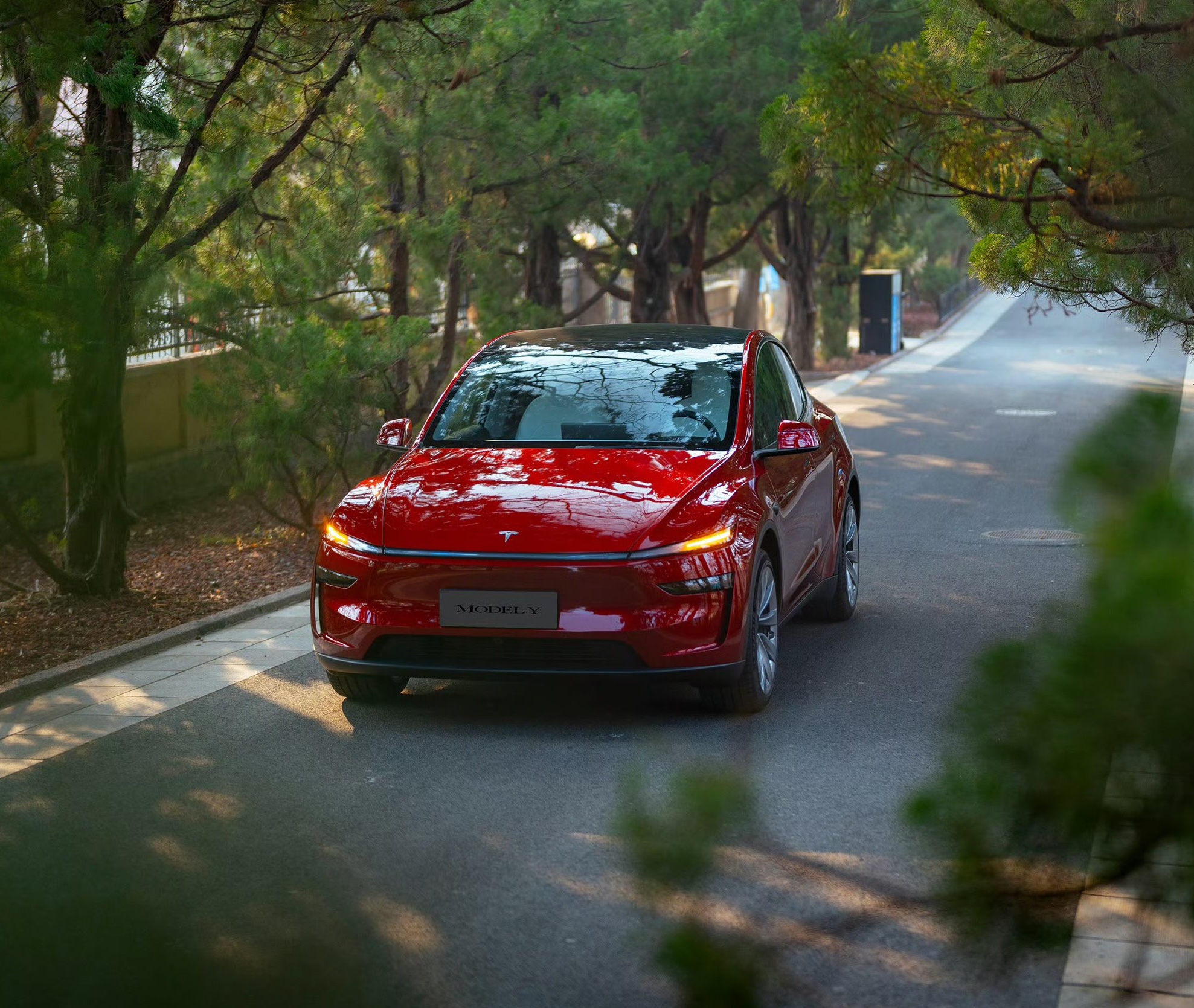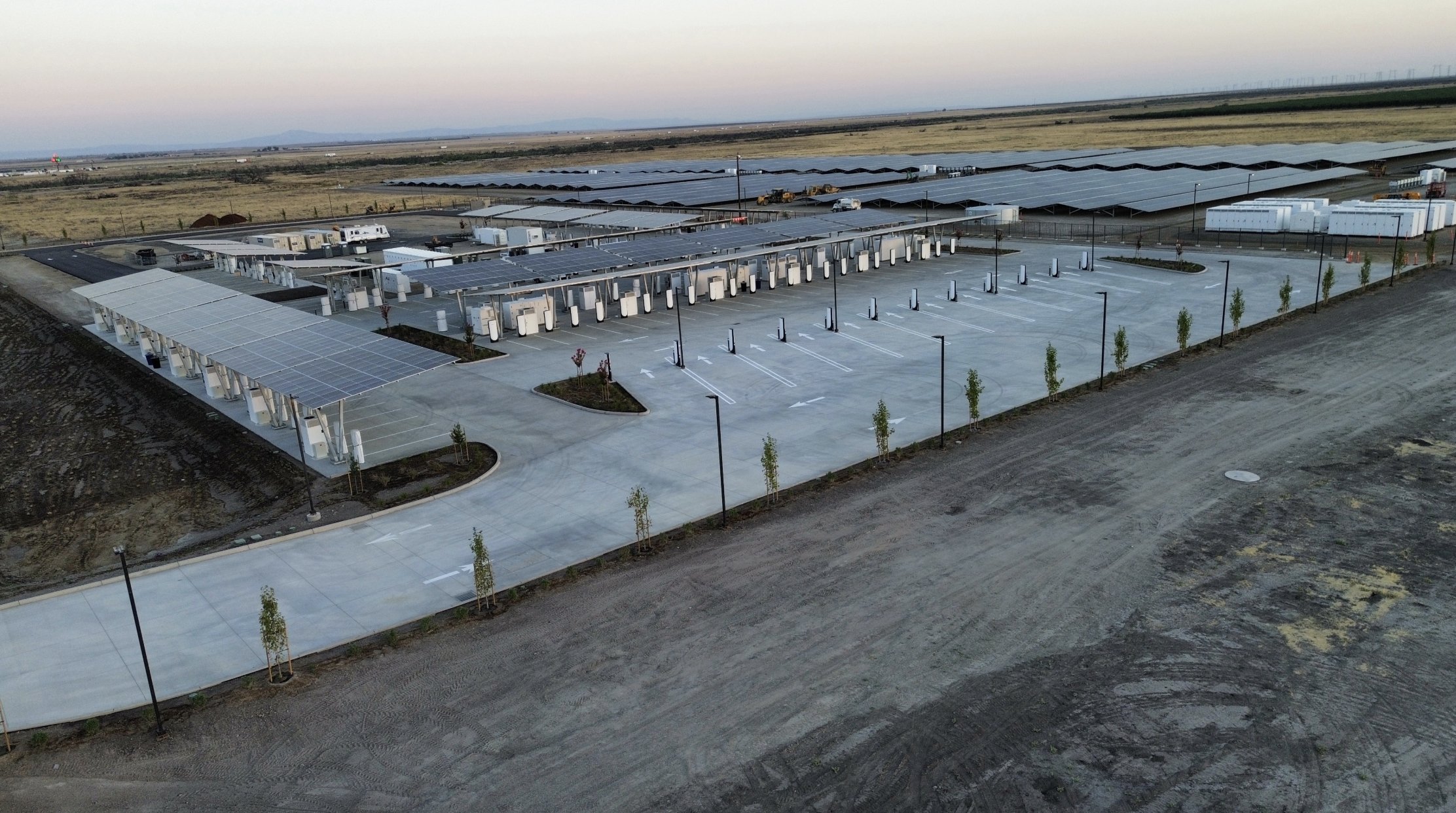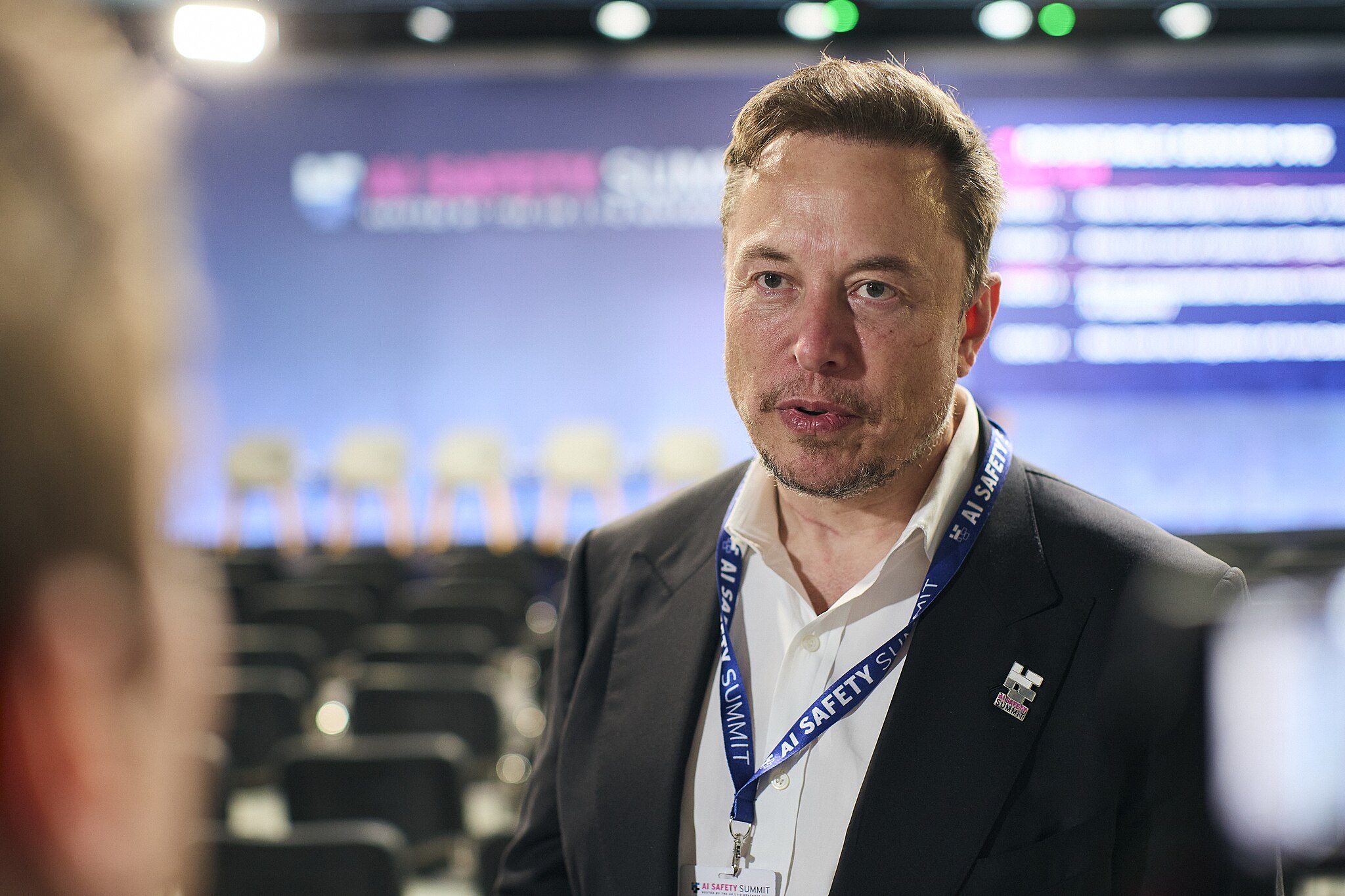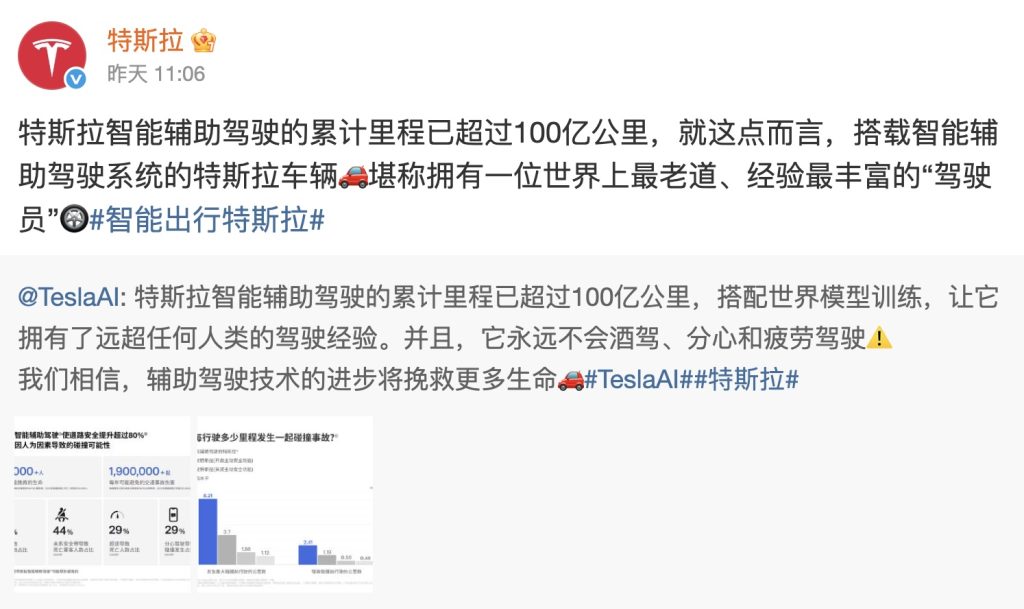News
(Op-ed) A neutral look at Tesla’s upcoming Q1 2025 vehicle deliveries
Elon Musk affects Tesla, but his impact on the company’s raw vehicle sales may not be as notable as critics would suggest.

Tesla is such a volatile topic for many that it’s difficult to get a neutral image of the company and its fundamentals today. A look at Tesla news coverage shows this, as even dedicated electric vehicle blogs and tech publications seem to find it difficult to separate Tesla from Elon Musk, who is more polarizing than ever.
This is what I aim to cover in this op-ed. I will be exploring Tesla’s first quarter vehicle deliveries, why they might be underwhelming, the reasons behind them, and why I believe the sky is not necessarily falling.
A likely miss
Analyst consensus for Tesla’s Q1 2025 deliveries currently stands at 418,000 vehicles. That would suggest a year-over-year improvement of 8.06% from the 386,810 vehicles that Tesla was able to deliver in the first quarter of 2024. Considering Tesla’s sales in China and Europe over January and February, 418,000 deliveries seem to be a long shot for the first quarter of 2025.
It would not be surprising at all if Tesla ends up missing Wall Street’s consensus estimates, and by a pretty wide margin. Such is expected considering Tesla’s focus in the first quarter. But what is this focus, really? Elon Musk’s politics? Not necessarily.
A Model Y-shaped hole
Critics and negative Tesla news coverage would argue that the company’s steep drop in sales in several European markets and China is a sign that the company is finished, or that Elon Musk is doing global damage to the Tesla brand. However, Tesla’s sales decline this Q1 may actually be affected in no small part by the company’s transition from the Model Y classic to the new Model Y, which was launched across the United States, China, and Germany.
The Model Y is Tesla’s strongest seller, and it comprises a huge portion of the company’s deliveries every quarter. Considering that the Model Y classic quite literally became the world’s best-selling vehicle by volume in 2023 and 2024, it would not be an exaggeration to state that Tesla’s deliveries have been greatly carried by the all-electric crossover. What would happen then if Tesla implements a transition to the Model Y’s new version across its factories worldwide? Raw Model Y deliveries will go down, at least until Tesla starts deliveries of the revamped all-electric crossover. This is exactly what seems to be happening in China.
A look at Tesla China’s numbers from January and February will show that the company saw fewer registrations this year compared to last year. However, vehicle registrations have since picked up with the start of the new Model Y’s domestic deliveries. Similar trends may emerge in the United States and Europe, as well as territories supplied by Giga Shanghai, Giga Texas, the Fremont Factory, and Giga Berlin.
The Elon Musk factor
There is no doubt that Elon Musk is at his most polarizing today, but to credit Tesla’s low deliveries to the CEO’s political antics is very shortsighted. Yes, Elon Musk affects Tesla, but his impact on the company’s raw vehicle sales may not be as notable as critics would suggest. This could be seen in the results of a poll from German publication t-online, which initially concluded that 94% of Germans won’t buy a Tesla anymore. As it turned out, the survey would end up painting the complete opposite picture once more respondents took the poll. With more than 467,000 respondents on the survey, over 70% stated that they would buy a Tesla.
To state that Elon Musk’s political actions are not adversely affecting Tesla’s appeal to some consumers would not be accurate. There are evidently people who will not be purchasing a Tesla due to Elon Musk and his work with the Trump administration. The impact of the Musk factor, however, may not be as drastic as Tesla critics would suggest. It would not, for example, result in 94% of car buyers suddenly swearing off Tesla. The vast majority of consumers, after all, generally gravitate to the best products in the market, period. Assuming that this is true for most consumers today, Tesla’s vehicles definitely still have a fighting chance this year.
In conclusion
Considering Wall Street’s 418,000 vehicle delivery consensus, it almost seems certain that Tesla will miss this estimate by a notable margin. This would likely result in a wave of reports alleging that demand is drying up worldwide or Musk has completely tanked the brand’s appeal to consumers. With the new Model Y now starting its deliveries across the globe, however, Tesla’s real performance and a clearer view of Musk’s effect on the company’s demand, would likely become more evident in the coming quarters.

News
Tesla’s Elon Musk posts updated Robotaxi fleet ramp for Austin, TX
Musk posted his update on social media platform X.

Elon Musk says Tesla will “roughly double” its supervised Robotaxi fleet in Austin next month as riders report long wait times and limited availability across the pilot program in the Texas city. Musk posted his update on social media platform X.
The move comes as Waymo accelerates its U.S. expansion with its fully driverless freeway service, intensifying competition in autonomous mobility.
Tesla to increase Austin Robotaxi fleet size
Tesla’s Robotaxi service in Austin continues to operate under supervised conditions, requiring a safety monitor in the front seat even as the company seeks regulatory approval to begin testing without human oversight. The current fleet is estimated at about 30 vehicles, StockTwists noted, and Musk’s commitment to doubling that figure follows widespread rider complaints about limited access and “High Service Demand” notifications.
Influencers and early users of the Robotaxi service have observed repeated failures to secure a ride during peak times, highlighting a supply bottleneck in one of Tesla’s most visible autonomy pilots. The expansion aims to provide more consistent availability as the company scales and gathers more real-world driving data, an advantage analysts often cite as a differentiator versus rivals.
Broader rollout plans
Tesla’s Robotaxi service has so far only been rolled out to Austin and the Bay Area, though reports have indicated that the electric vehicle maker is putting in a lot of effort to expand the service to other cities across the United States. Waymo, the Robotaxi service’s biggest competitor, has ramped its service to areas like the San Francisco Bay Area, Los Angeles, and Phoenix.
Analysts continue to highlight Tesla’s long-term autonomy potential due to its global fleet size, vertically integrated design, and immense real-world data. ARK Invest has maintained that Tesla Robotaxis could represent up to 90% of the company’s enterprise value by 2029. BTIG analysts, on the other hand, added that upcoming Full Self-Driving upgrades will enhance reasoning, particularly parking decisions, while Tesla pushes toward expansions in Austin, the Bay Area, and potentially 8 to 10 metro regions by the end of 2025.
News
Tesla finishes its biggest Supercharger ever with 168 stalls

Tesla has finished construction at its biggest Supercharger ever in Lost Hills, California, and all 168 stalls are officially open as of today.
After several years of development, the company has officially announced that the Lost Hills Supercharger, known as Project Oasis, is officially open with 168 stalls active and available to drivers.
Tesla announced the completion of the Lost Hills Supercharger on Tuesday, showing off the site, which is powered by 10 Megapack batteries for storage and is completely independent of the grid, as it has 11 MW of solar panels bringing energy to the massive Battery Energy Storage System (BESS).
All 168 Stalls at the Tesla Supercharger in Lost Hills, California are officially open! pic.twitter.com/eo9xmZyUNB
— TESLARATI (@Teslarati) November 25, 2025
This is the largest Supercharger in the world and opens just in time for the Thanksgiving holiday, which is the most-traveled weekend of the year in the United States.
Spanning across 30 acres, it was partially opened back in July 2025 as Tesla opened just 84 of the 168 stalls at the site. However, Tesla finished certifying the site recently, which enabled the Supercharger to open up completely.
The site generates roughly 20 GWh of energy annually, which is enough to power roughly 1,700 homes. The launch of this site specifically is massive for the company as it plans to launch more Superchargers in more rural areas, making charging more available for cross-country rides that require stops in more remote regions of the United States.
This is perhaps the only weak point of Tesla’s massive charging infrastructure.
It has some features that are also extremely welcome for some owners, including things like pull-through stalls for those who tow, an idea that was extremely popular following the launch of the Cybertruck.
Tesla has over 70,000 active Superchargers across the world. The company has also made efforts to create unique experiences at some of the stops, most notably with its Tesla Diner, located on Santa Monica Boulevard in Los Angeles.
That Supercharger has two massive drive-in movie theaters and will soon transition to a full-service restaurant following the departure of its executive chef, Eric Greenspan.
Elon Musk
Elon Musk proposes Grok 5 vs world’s best League of Legends team match
Musk’s proposal has received positive reception from professional players and Riot Games alike.

Elon Musk has proposed a high-profile gaming challenge for xAI’s upcoming Grok 5. As per Musk, it would be interesting to see if the large language model could beat the world’ best human League of Legends team with specific constraints.
Musk’s proposal has received positive reception from professional players and Riot Games alike, suggesting that the exciting exhibition match might indeed happen.
Musk outlines restrictions for Grok
In his post on X, Musk detailed constraints to keep the match competitive, including limiting Grok to human-level reaction times, human-speed clicking, and viewing the game only through a camera feed with standard 20/20 vision. The idea quickly circulated across the esports community, drawing commentary from former pros and AI researchers, as noted in a Dexerto report.
Former League pro Eugene “Pobelter” Park expressed enthusiasm, offering to help Musk’s team and noting the unique comparison to past AI-versus-human breakthroughs, such as OpenAI’s Dota 2 bots. AI researcher Oriol Vinyals, who previously reached Grandmaster rank in StarCraft, suggested testing Grok in RTS gameplay as well.
Musk welcomed the idea, even responding positively to Vinyals’ comment that it would be nice to see Optimus operate the mouse and keyboard.
Pros debate Grok’s chances, T1 and Riot show interest
Reactions weren’t universally optimistic. Former professional mid-laner Joedat “Voyboy” Esfahani argued that even with Grok’s rapid learning capabilities, League of Legends requires deep synergy, game-state interpretation, and team coordination that may be difficult for AI to master at top competitive levels. Yiliang “Doublelift” Peng was similarly skeptical, publicly stating he doubted Grok could beat T1, or even himself, and jokingly promised to shave his head if Grok managed to win.
T1, however, embraced the proposal, responding with a GIF of Faker and the message “We are ready,” signaling their willingness to participate. Riot Games itself also reacted, with co-founder Marc Merrill replying to Musk with “let’s discuss.” Needless to say, it appears that Riot Games in onboard with the idea.
Though no match has been confirmed, interest from players, teams, and Riot suggests the concept could materialize into a landmark AI-versus-human matchup, potentially becoming one of the most viewed League of Legends events in history. The fact that Grok 5 will be constrained to human limits would definitely add an interesting dimension to the matchup, as it could truly demonstrate how human-like the large language model could be like in real-time scenarios.
Tesla has passed a key milestone, and it was one that CEO Elon Musk initially mentioned more than nine years ago when he published Master Plan, Part Deux.
As per Tesla China in a post on its official Weibo account, the company’s Autopilot system has accumulated over 10 billion kilometers of real-world driving experience.
Tesla China’s subtle, but huge announcement
In its Weibo post, Tesla China announced that the company’s Autopilot system has accumulated 10 billion kilometers of driving experience. “In this respect, Tesla vehicles equipped with Autopilot technology can be considered to have the world’s most experienced and seasoned driver.”
Tesla AI’s handle on Weibo also highlighted a key advantage of the company’s self-driving system. “It will never drive under the influence of alcohol, be distracted, or be fatigued,” the team wrote. “We believe that advancements in Autopilot technology will save more lives.”
Tesla China did not clarify exactly what it meant by “Autopilot” in its Weibo post, though the company’s intense focus on FSD over the past years suggests that the term includes miles that were driven by FSD (Beta) and Full Self-Driving (Supervised). Either way, 10 billion cumulative miles of real-world data is something that few, if any, competitors could compete with.
Advertisement
–>

Elon Musk’s 10-billion-km estimate, way back in 2016
When Elon Musk published Master Plan Part Deux, he outlined his vision for the company’s autonomous driving system. At the time, Autopilot was still very new, though Musk was already envisioning how the system could get regulatory approval worldwide. He estimated that worldwide regulatory approval will probably require around 10 billion miles of real-world driving data, which was an impossible-sounding amount at the time.
“Even once the software is highly refined and far better than the average human driver, there will still be a significant time gap, varying widely by jurisdiction, before true self-driving is approved by regulators. We expect that worldwide regulatory approval will require something on the order of 6 billion miles (10 billion km). Current fleet learning is happening at just over 3 million miles (5 million km) per day,” Musk wrote.
It’s quite interesting but Tesla is indeed getting regulatory approval for FSD (Supervised) at a steady pace today, at a time when 10 billion miles of data has been achieved. The system has been active in the United States and has since been rolled out to other countries such as Australia, New Zealand, China, and, more recently, South Korea. Expectations are high that Tesla could secure FSD approval in Europe sometime next year as well.








